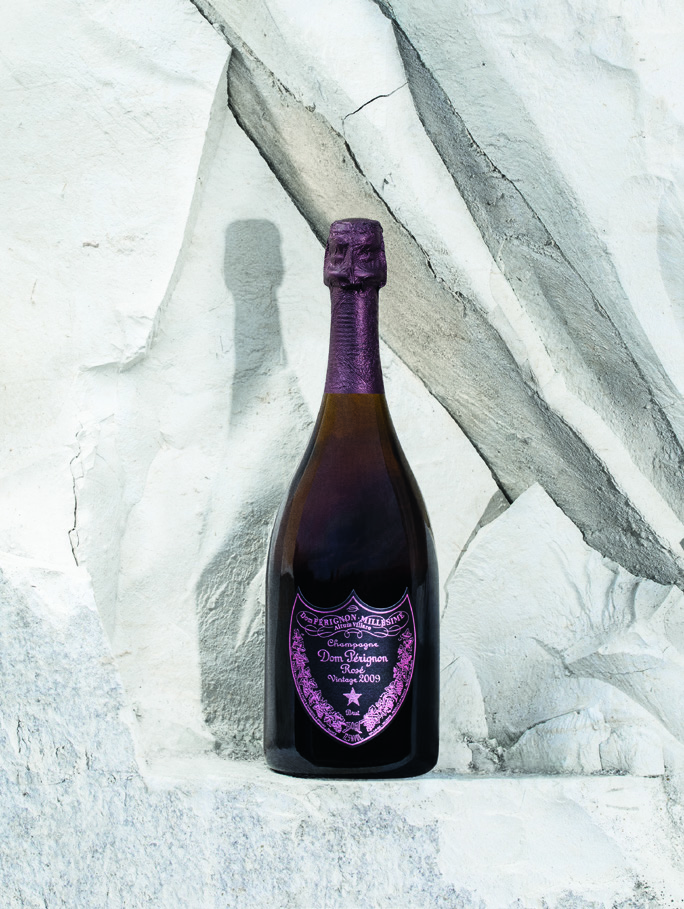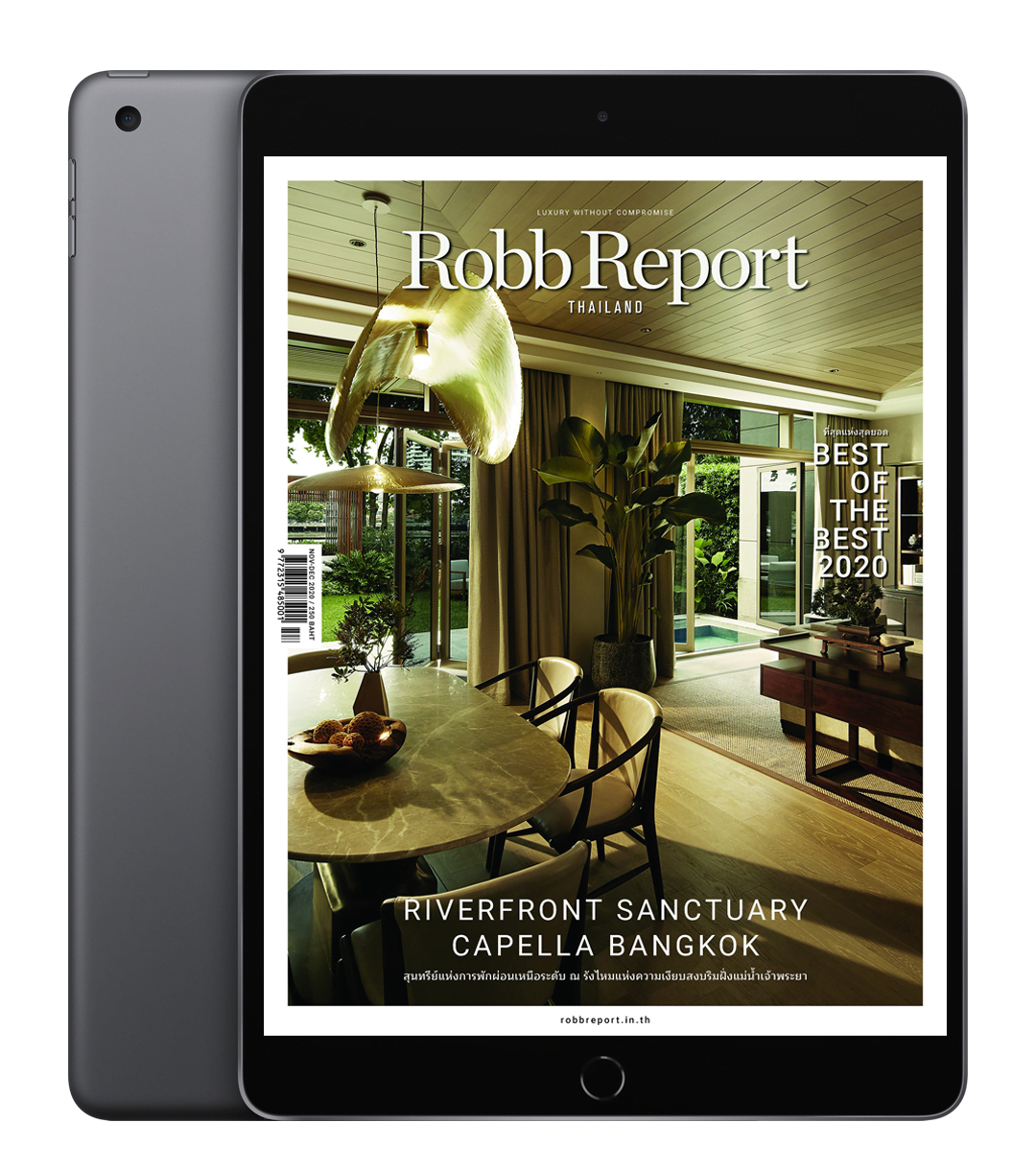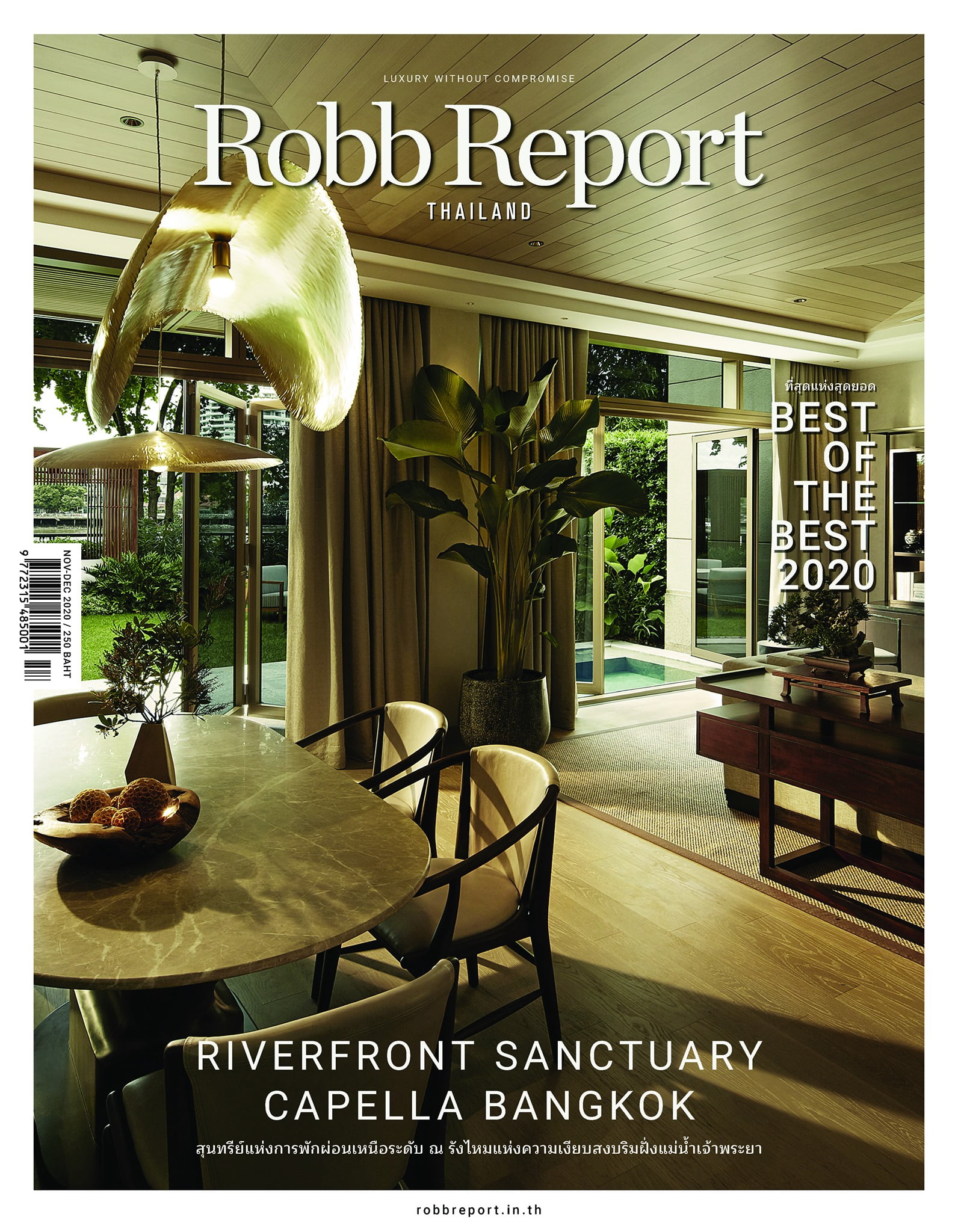Vincent Chaperon ใช้เวลาในวัยเด็กของเขาฝันถึงทะเล เขาเป็นหลานชายของทหารนาวิกโยธินฝรั่งเศส เติบโตใกล้ทะเล เขาเติบโตมาใกล้มหาสมุทรและรักการเดินเรือ ซึ่งบางทีอาจเป็นเหตุผลว่าทำไมเขาถึงคิดว่าการอยู่ที่ Moët & Chandon ซึ่งอยู่ไกลทะเล คงอยู่ได้ไม่นาน คงจะเป็นเพียงช่วงเวลาสั้น ๆ หลังจากเริ่มงานที่ Moët & Chandon ในปี 1999 เพียง 6 ปี เขาก็ย้ายไปร่วมทีม Dom Pérignon และใช้เวลา 25 ปีหลังจากนั้นไต่เต้าจนได้เป็นหัวหน้าผู้ผลิตไวน์ (chef de cave) โดยสืบทอดตำแหน่งต่อจาก Richard Geoffroy หลังจากร่วมงานกันมา 13 ปี แม้จะอยู่ไกลทะเล Chaperon ก็หลงใหลใน “ไวน์” อย่างหมดหัวใจ เขาเปรียบกระบวนการผลิตแชมเปญ กับการสร้างสรรค์สถาปัตยกรรม โดยเริ่มต้นจากอารมณ์ ปริมาตร เนื้อสัมผัส แสง บรรยากาศ ความรู้สึก และบุคลิกภาพ
Dom Pérignon ตั้งชื่อตามบาทหลวงเบเนดิกติน ผู้ซึ่งได้รับยกย่องเป็น “บิดาแห่งแชมเปญ” ผลิตเฉพาะในปีที่มีผลผลิตองุ่นยอดเยี่ยม และเป็นแบบ Single Vintage (ผลิตจากองุ่นปีเดียว) สำหรับ Dom Pérignon Rosé Vintage 2009 ที่เพิ่งเปิดตัว Chaperon ยกย่องฝีมือของทีมงานผู้ผลิต ซึ่งประกอบด้วย ผู้ปลูกองุ่น ผู้ผลิตไวน์ ช่างฝีมือ และนักวิทยาศาสตร์ โดยใช้คำว่า “ชวนหลงใหลและมีชีวิตชีวาอย่างยิ่ง”
Chaperon ในวัย 49 ปี อธิบายว่าไวน์แต่ละรุ่นเป็น “บทสนทนา ระหว่างลักษณะของปีนั้นๆ กับวิสัยทัศน์ของ Dom Pérignon” แม้ว่าเขาและผู้ผลิตไวน์คนอื่น ๆ ในภูมิภาคนี้ จะตระหนักดีว่าการเปลี่ยนแปลงสภาพภูมิอากาศ ส่งผลกระทบต่อลักษณะขององุ่นในแต่ละปี ให้แปรปรวนมากขึ้น เขาย้อนความทรงจำถึงปี 2003 ที่ไวน์องุ่นทั้งร้อนและแห้งจัดผิดปกติ องุ่นต้องเก็บเกี่ยวในเดือนสิงหาคมเป็นครั้งแรกเท่าที่จำได้ คลื่นความร้อนและภัยแล้ง ทำให้การเก็บเกี่ยวองุ่นในเดือนสิงหาคมกลายเป็นมาตรฐาน ส่งผลต่อระดับน้ำตาลที่อาจเพิ่มขึ้น และกรดลดลงได้
แต่ Chaperon ยกย่อง Dom Pérignon ว่าเป็นบริษัทที่มี “จิตวิญญาณความเป็นผู้ประกอบการ” และมีทรัพยากรที่ “เอื้อให้เราสามารถรับความเสี่ยงที่คำนวณได้” ดูเหมือนจะยินดีกับความท้าทายและอิสระในการค้นพบ “ในความคิดของผม Rosé มีศักยภาพมากกว่า Blanc (แชมเปญขาว) เสียอีก Dom Pérignon Rosé มีเอกลักษณ์เฉพาะตัว โดยผสมผสานกลิ่นอายของไวน์แดง แต่ไม่ใช่ไวน์แดงโดยแท้ มันมีกลิ่นอายของโรเซ่ แต่ก็ก้าวไปไกลกว่าหมวดหมู่ มันมีบุคลิกภาพที่โดดเด่นและความหลากหลายที่ยอดเยี่ยม ซึ่งเป็นเหตุผลว่าทำไมเราถึงไม่หยุดสำรวจและพัฒนามัน”
Dom Pérignon Rosé Vintage 2009 เริ่มต้นด้วยฟองอากาศที่ละเอียด เมื่อยกขึ้นดื่มจะสัมผัสได้ถึงกลิ่นหอมของราสเบอร์รี่ อินทผลัมแห้ง และกลีบกุหลาบ พร้อมโน๊ตเบาๆ ของเครื่องเทศอบอวล เมื่อไวน์สัมผัสกับลิ้น จะได้รสชาติของมะเดื่อฝรั่ง เชอร์รี่ บริยอช และเกสรฟักทอง ผสานกับความเปรี้ยวเบาๆ ที่ลงตัว Chaperon เชื่อว่าความสง่างามและความซับซ้อนของไวน์นี้ มาจากการบ่มนานถึง 14 ปี ซึ่งทำให้ไวน์มีชีวิตชีวา และชวนหลงใหล ซึ่งเหมาะสมอย่างยิ่งสำหรับรุ่นที่ผลิตโดยหัวหน้าผู้ผลิตไวน์ 2 รุ่น
บทความโดย Mike DeSimone and Jeff Jenssen
Vincent Chaperon spent his childhood dreaming of the sea. The grandson of French marines on both sides of his family, he grew up near the ocean and loved sailing—which is perhaps why he figured his stint at Moët & Chandon, in landlocked Champagne, would be a short one when he started in 1999. Six years later he joined Dom Pérignon, and 25 years on he’s that label’s chef de cave, a role he assumed in 2019 after a 13-year apprenticeship under his predecessor, Richard Geoffroy. Despite the lack of open water, Chaperon has sunk his roots here—“progressively," he notes, which is how, he says, “humans fall in love with someone or something." For him, it goes without saying, “that’s wine."
Named for the Benedictine monk considered the spiritual father of Champagne, Dom Pérignon is produced only in the finest years and only as a single vintage. In discussing the recently released Dom Pérignon Rosé Vintage 2009, Chaperon compares the Champagne-making process grandly to architecture: “We are creating a space starting from an emotion, a volume, a texture, a light, an atmosphere, a feeling, a personality." The Rosé Vintage 2009 is “captivating and intensely alive," he says, crediting the combined skill of a team that includes “vine growers, winemakers, crafters, and scientists."
Chaperon, 49, describes each vintage as a “dialogue between the character of the year and the vision of Dom Pérignon," though he, like others in the region, notes that climate change is making each year’s character increasingly volatile. He recalls the unusually hot and dry 2003 vintage, when grapes were harvested in August for the first time in memory; heat waves and drought have since made August grape collection the standard, potentially upping the sugar levels and lowering the acid.
But Chaperon, who credits the venerable Champagne house with a fundamentally “entrepreneurial spirit" and the type of resources that “allow us to take calculated risks," seems to welcome challenge—and the freedom to discover. “In my opinion, Rosé has even more potential than Blanc. Dom Pérignon Rosé can be stretched—it has a sense of red wine, but it’s not a red wine. It has a sense of rosé, but it goes beyond the category. It has a unique personality and great versatility in the experience, which is why we keep exploring it."
The 2009 Rosé Vintage releases a discreet column of bubbles that opens a bouquet of raspberry, dried fig, and rose petal, with a soft hint of baking spice. Flavors of Mission fig, cherry, rising brioche, and fennel pollen roll over the palate, all bathed in subtle acidity. Chaperon attributes the wine’s elegance and depth to its 14 years of aging, which he says resulted in something “captivating and intensely alive." For a vintage produced by two generations of chefs de cave, that feels entirely appropriate.
The article by Mike DeSimone and Jeff Jenssen









